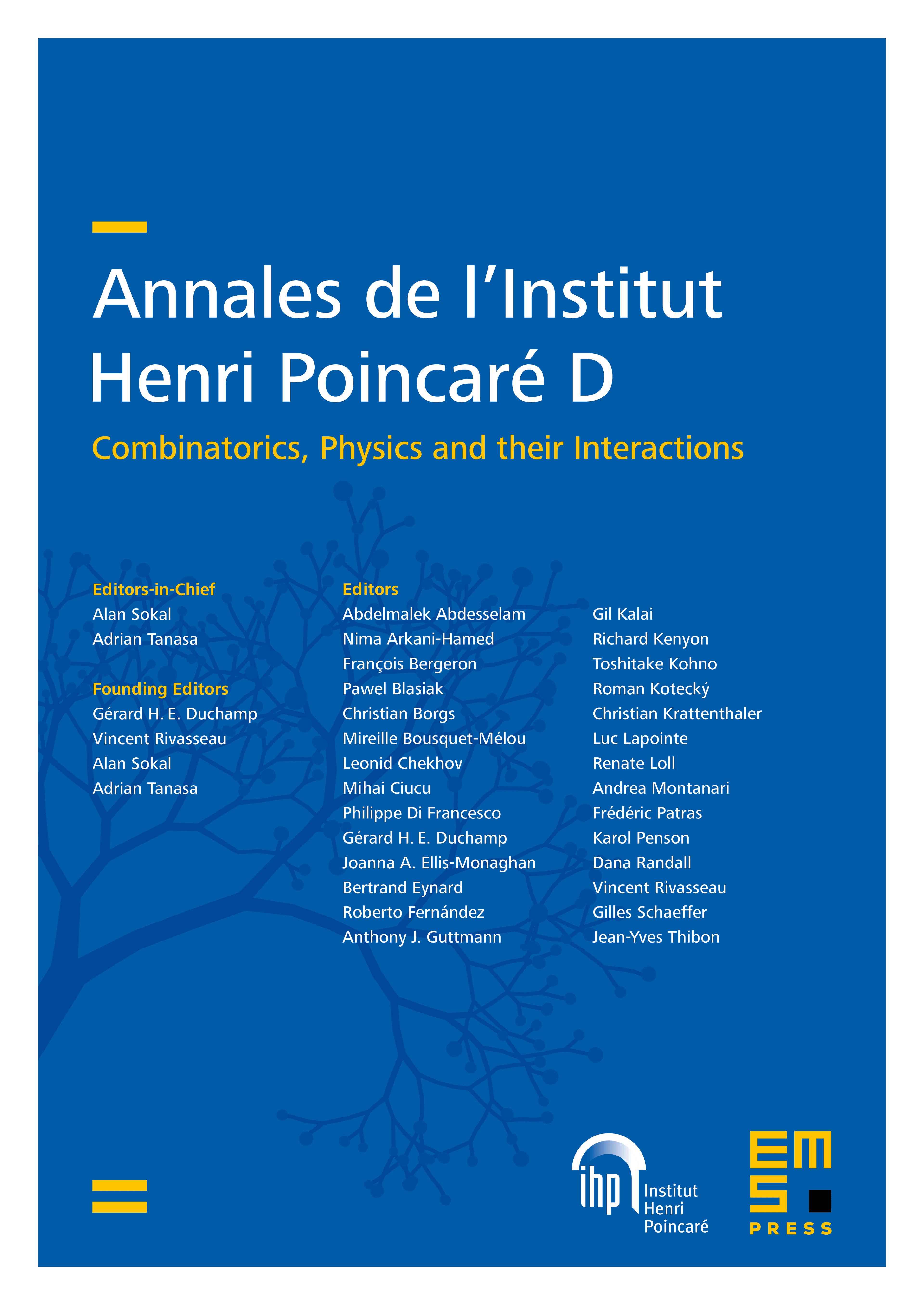On the randomized Horn problem and the surface tension of hives
Aalok Ashok Gangopadhyay
Tata Institute of Fundamental Research, Mumbai, IndiaHariharan Narayanan
Tata Institute of Fundamental Research, Mumbai, India

Abstract
Given two nonincreasing -tuples of real numbers , , the Horn problem [Pacific J. Math. 12 (1962), 225–241] asks for a description of all nonincreasing -tuples of real numbers such that there exist Hermitian matrices , , and , respectively, with these spectra such that . There is also a randomized version of this problem, where and are sampled uniformly at random from orbits of Hermitian matrices arising from the conjugacy action by elements of the unitary group. One then asks for a description of the probability measure of the spectrum of the sum . Both the original Horn problem and its randomized version have solutions using the hives introduced by Knutson and Tao (2018), (1999), and (2001). In an asymptotic sense, as , large deviations for the randomized Horn problem were given by Narayanan and Sheffield [Ann. Probab. 52 (2024), 1093–1152] in terms of the surface tension of hives. In this paper, we provide upper and lower bounds on this surface tension function. We also obtain a closed-form expression for the minimum surface tension integral over all continuum hives with boundary conditions arising from the semicircle law. Finally, we give several empirical results for random hives and lozenge tilings arising from an application of the octahedron recurrence from Narayanan et al. [Probab. Theory Related Fields 190 (2024), 1121–1165] for large and a numerical approximation of the surface tension function.
Cite this article
Aalok Ashok Gangopadhyay, Hariharan Narayanan, On the randomized Horn problem and the surface tension of hives. Ann. Inst. Henri Poincaré Comb. Phys. Interact. (2025), published online first
DOI 10.4171/AIHPD/221